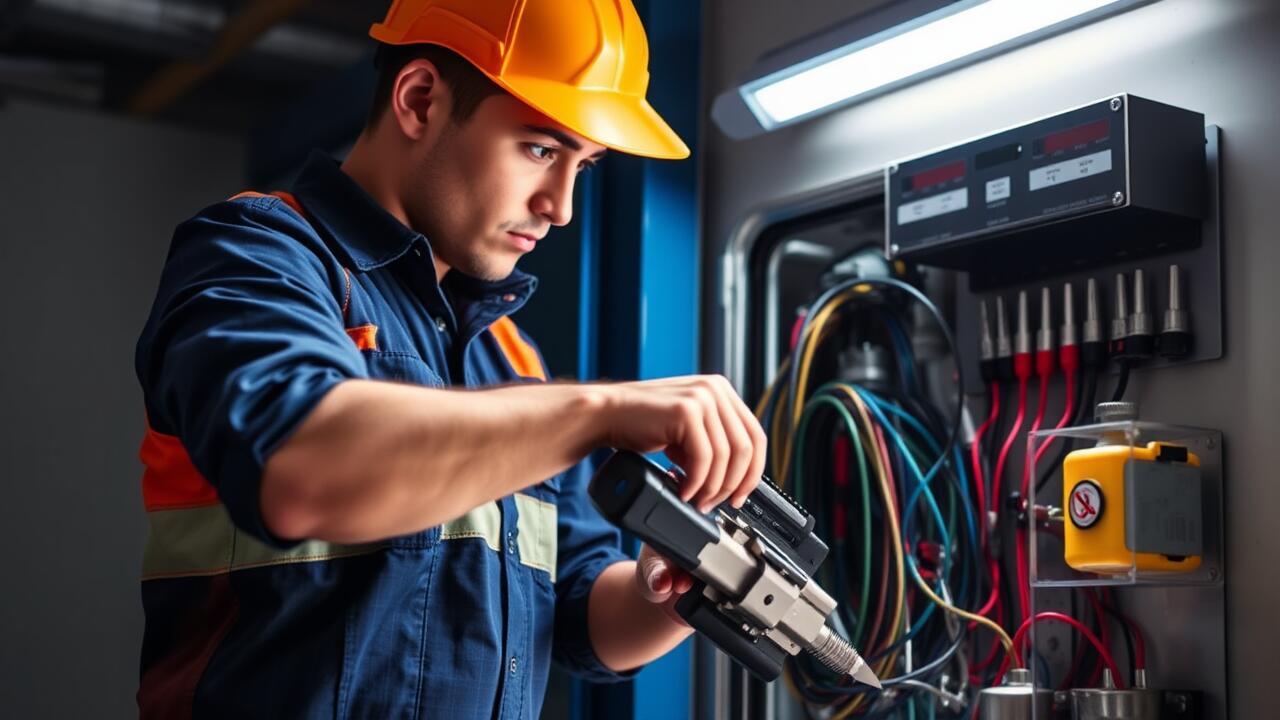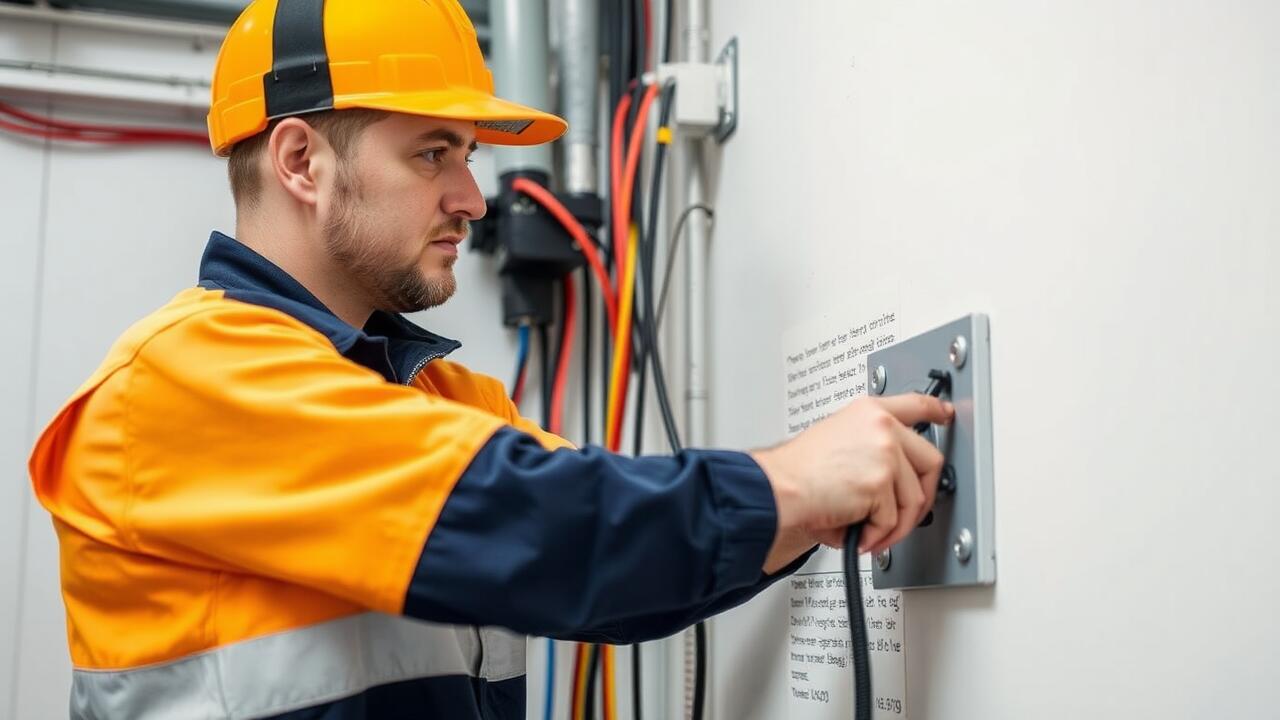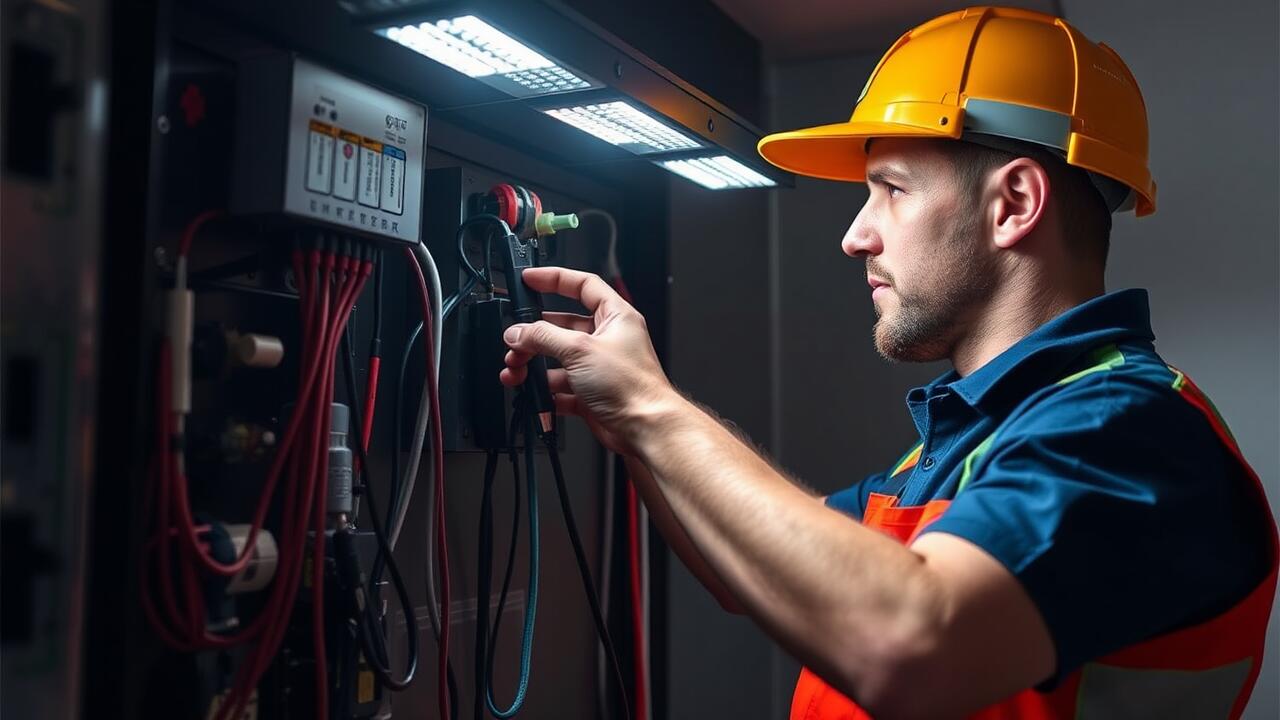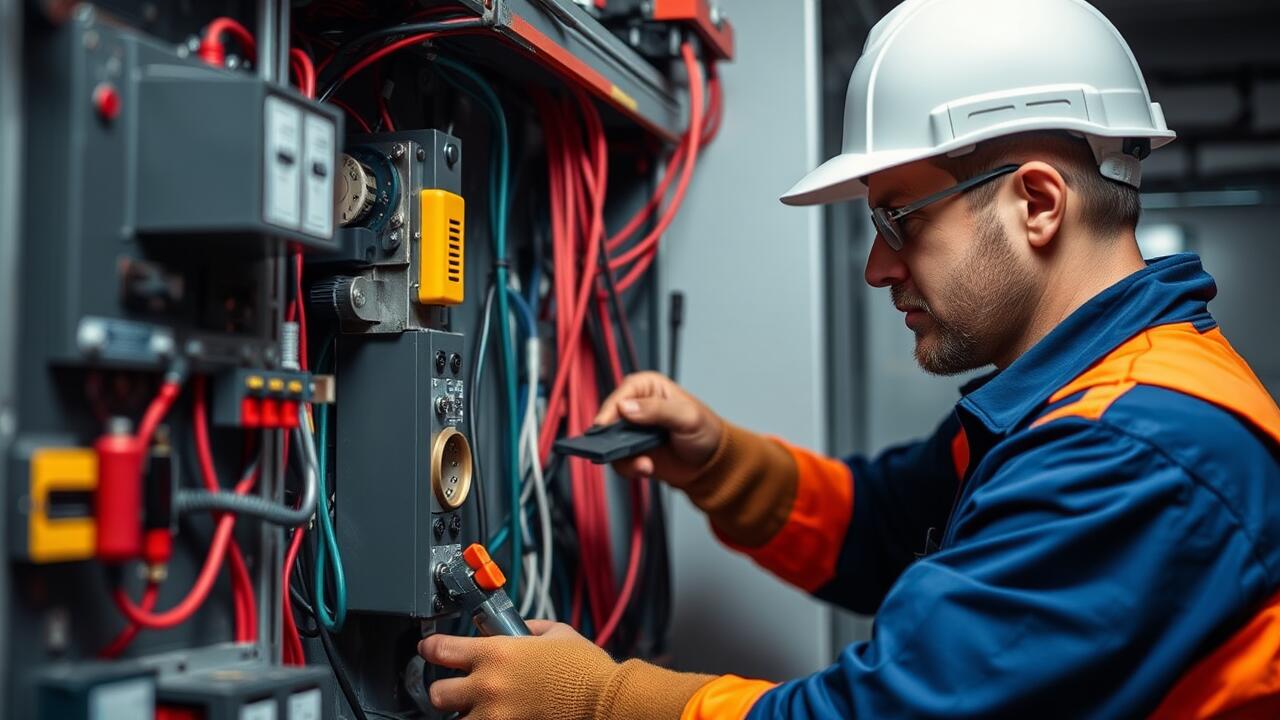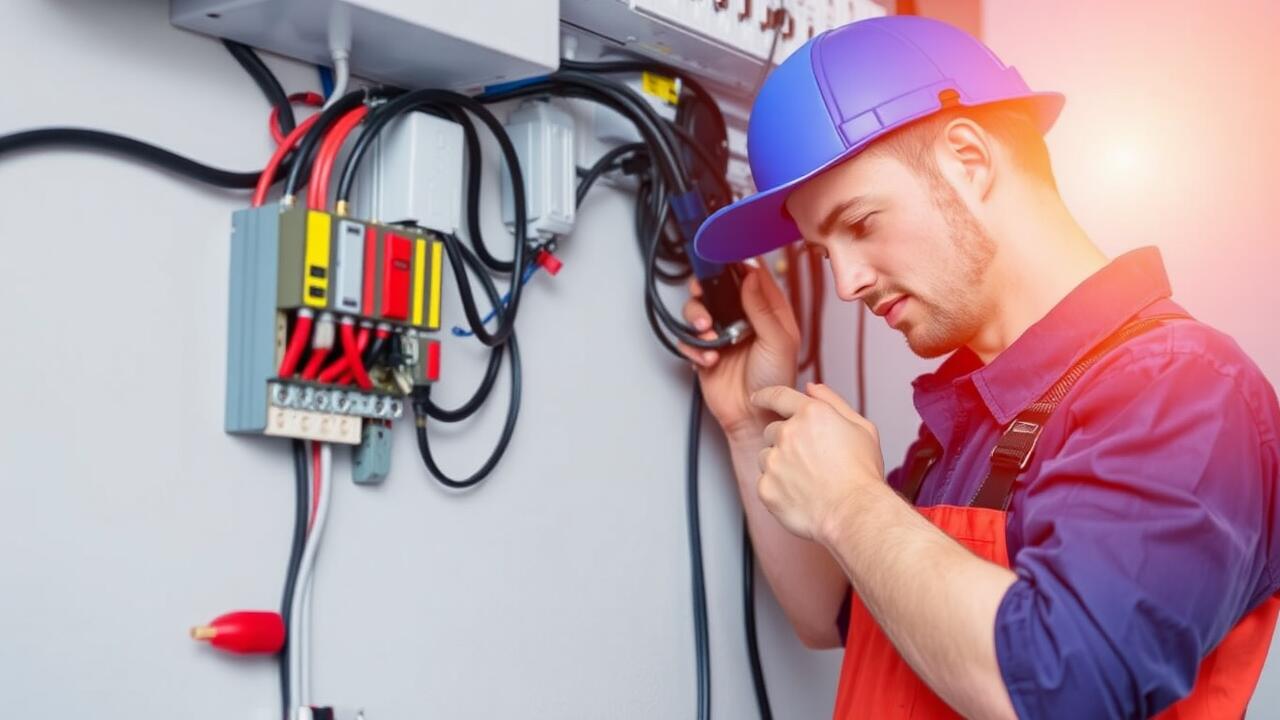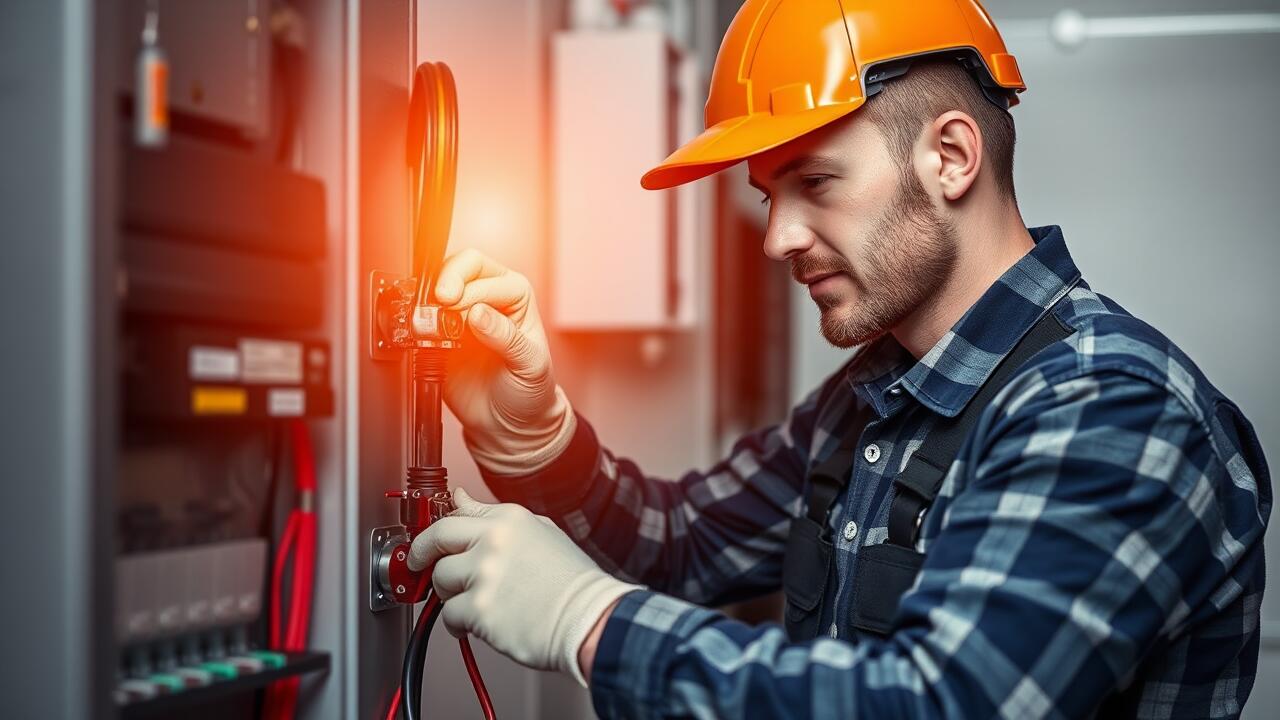
Steps to Diagnose Overloaded Circuits
Diagnosing overloaded circuits requires a careful and systematic approach. Begin by checking the circuit breaker or fuse box for any tripped breakers or blown fuses. This can signal an overload condition. Next, inspect the appliances and devices connected to the circuit. Identify their wattage ratings and assess whether the total load exceeds the circuit's capacity, which typically ranges from 15 to 20 amps for general-purpose circuits.
If circuit overload is suspected, monitor the operation of interconnected appliances to determine if they contribute to the issue. Pay attention to any signs of overheating, such as warm outlets or discolored plugs, as these can indicate potential hazards. For those needing assistance with Electrical Repairs in Westchase, Houston, seeking a licensed electrician can help ensure a thorough evaluation of the electrical system, ensuring both safety and compliance with local codes.
A Systematic Approach to Troubleshooting
Troubleshooting an overloaded circuit requires a systematic method to pinpoint the issue effectively. Start by identifying any signs of overheating, such as warm or discolored outlets and breaker panels. Check the circuit breaker to see if it has tripped, indicating an overload condition. Use a multimeter to measure the voltage and current at various points in the circuit to determine if the load exceeds the circuit's capacity. Documenting these findings can help in understanding the extent of the problem and guide you through the repairs.
Once the issues are identified, it's essential to consider the specific needs of the circuit. This may involve reallocating certain devices to different circuits or upgrading existing wiring to handle higher loads. If the problem persists, seeking expert assistance such as Electrical Repairs in Montrose, Houston, could be necessary. Professionals can evaluate the entire electrical system while ensuring safety and compliance with local codes.
Preventive Measures for Circuit Overload
Taking proactive steps can significantly reduce the risk of circuit overload. Regular inspections of electrical systems are essential for identifying potential issues before they escalate. Homeowners should be vigilant about the total load on each circuit and avoid using multiple high-wattage appliances simultaneously on the same line. Implementing dedicated circuits for heavier loads like refrigerators and air conditioners can also prevent overloading.
In addition, using power strips and surge protectors wisely can help manage the demand on electrical circuits. Ensuring that all electrical work meets local codes and standards minimizes risks associated with overloaded circuits. For any necessary updates or repairs, seeking professional help for Electrical Repairs in Montrose, Houston is advisable. Professionals can provide insights and solutions tailored to an individual home's needs, enhancing overall safety and functionality.
Best Practices for Electrical Safety
Maintaining electrical safety is crucial for reducing the risk of circuit overload and potential hazards. Always ensure that outlets are not overloaded with multiple devices. Utilize power strips with built-in circuit breakers for additional protection. Regularly check cords and plugs for any signs of damage, such as fraying or discoloration. Keep electrical panels accessible and labeled, allowing for quick access in case of an emergency. Professional help is essential when performing any Electrical Repairs in Greenspoint, Houston, as trained electricians can identify potential issues before they escalate.
It is also important to educate all household members about electrical safety practices. This includes discouraging the use of extension cords as permanent solutions and knowing how to turn off power in case of an emergency. Ensuring smoke detectors are in place and functioning provides an added layer of safety when dealing with electrical systems. Regular inspections by qualified electricians help maintain an up-to-date understanding of the electrical system’s condition. Prioritizing safety measures ultimately protects both property and residents from the dangers of electrical overload.
Upgrading Electrical Circuits
Upgrading electrical circuits is often a necessary step to ensure the safety and efficiency of a home or business. As appliances and technology evolve, the demand for power increases. An older electrical system may not be equipped to handle these additional loads, leading to potential hazards such as circuit overloads or even fires. In such cases, working with qualified professionals is crucial. They can assess the existing infrastructure, recommend necessary upgrades, and ensure that the work complies with local codes and safety standards.
When contemplating an upgrade, homeowners should consider several factors, including the age of the current wiring, the number of devices being used, and future power needs. Investing in modern circuit breakers and additional outlets can significantly enhance the electrical capacity. It is advisable to seek experienced services, such as Electrical Repairs in Westchase, Houston, for evaluating your specific needs and implementing upgrades effectively. This proactive approach not only safeguards against immediate risks but also prepares the electrical system for future demands.
When and How to Upgrade
Upgrading electrical circuits often becomes necessary when existing systems cannot handle increased demands from modern appliances and technologies. Homeowners may notice frequent circuit trips or dimming lights when multiple devices are in use. These signs indicate that the circuit may be overloaded, warranting an evaluation to determine whether an upgrade is needed. Consulting with professionals experienced in Electrical Repairs in Westchase, Houston can provide clarity on the specific requirements for your home.
The process of upgrading involves assessing the current electrical system, determining the appropriate capacity, and installing new wiring or circuit breakers as needed. Ensuring compliance with local codes and safety standards is crucial during this process. An expert can offer valuable insights and help streamline the upgrade, ensuring that your electrical system runs efficiently and safely for years to come.
FAQS
What are the signs of an overloaded circuit?
Common signs of an overloaded circuit include frequent tripped breakers, dimming or flickering lights, buzzing outlets, and warm or discolored outlets and switches.
How can I diagnose if my circuit is overloaded?
To diagnose an overloaded circuit, check the circuit breaker panel for tripped breakers, assess the total wattage of devices connected to the circuit, and look for any physical signs of damage or overheating in outlets and wiring.
What are some preventive measures I can take to avoid circuit overload?
Preventive measures include distributing electrical devices evenly across circuits, avoiding the use of multiple high-wattage appliances on the same circuit, and using surge protectors with built-in circuit breakers.
When should I consider upgrading my electrical circuits?
You should consider upgrading your electrical circuits if you frequently experience circuit overloads, if your home uses outdated wiring or circuits, or if you are planning to add significant electrical loads, such as new appliances or electronics.
Is it safe to troubleshoot overloaded circuits on my own?
While some troubleshooting can be done safely, it is always best to consult a licensed electrician for any serious issues or if you are unsure, to ensure your safety and compliance with electrical codes.
